
I’m a big fan of cooking, but I have this bad habit of using every pan, plate, and spoon in the kitchen when I decide to do it. The food is always great, but in the aftermath, I’m left with a sink full of dishes and a messy kitchen. And every time, I somehow end up scrubbing this one dish coated in hardened cheese for 45 minutes straight before finally giving up. But we’ve all got to do it eventually. The good news is we’ve found 15 ways you can cut down your clean-up time in the kitchen, and get even the greasiest dishes clean with minimum effort.
1. Use Soda to Clean Dirty Dishes
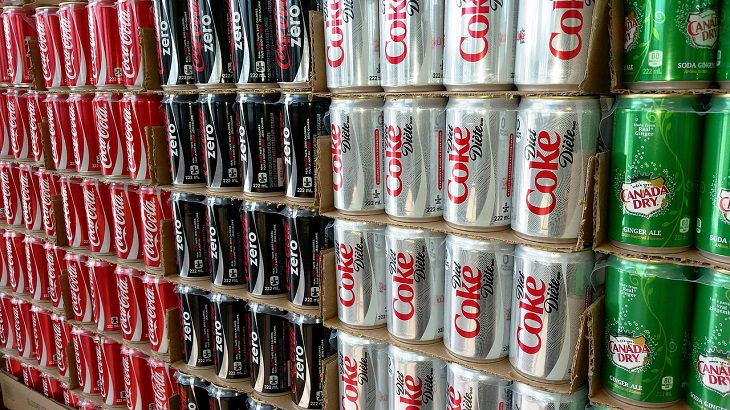
Soda isn't good for your health, or your teeth, but it can be an extremely effective cleaning agent. It's also a great way to make use of that Coca Cola or Pepsi you bought for a party but is now just taking up space in your fridge or pantry (while you’re fighting off the urge to drink it).
Just soak any pots that have scorch marks or burnt stains in soda and watch them practically vanish overnight, as attested by Jennifer Gregory, the brand manager of Molly Maid, a residential cleaning franchise.
2. Soak Your Dishes Beforehand
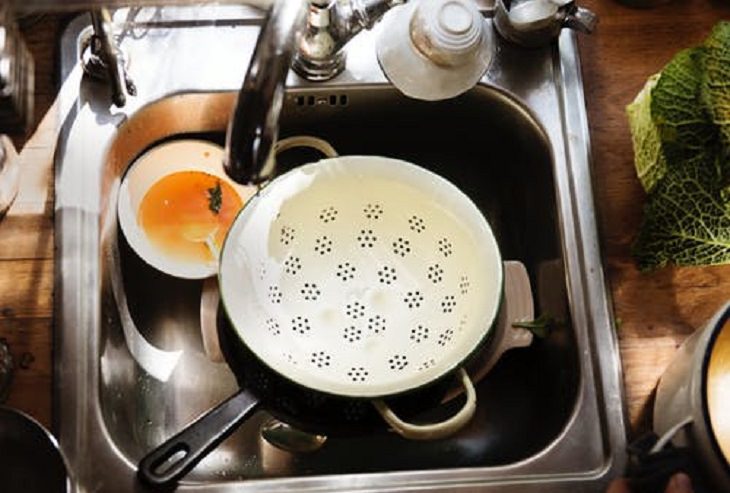
In case it’s one of those days (or nights) when the dishes are just not a task you want to deal with, it’s advisable to leave them to soak in water. For best results with dishes you might not get to for a few days, leave them in a pan or even a plastic basket with soap water. This will make the task a little easier when you finally get around to it.
3. Turn On Your Gadgets to Clean Them
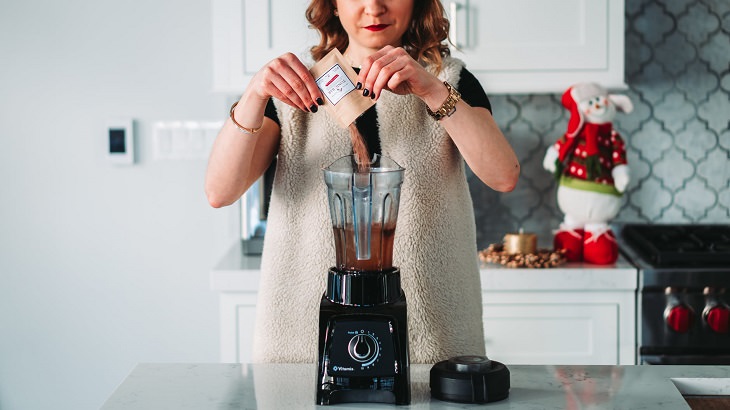
With some of the larger kitchen appliances, it can be hard to clean out the bits that have accumulated in corners. Food can get stuck under the blades in blenders or in slow-cookers. Even coffee pots get their fair share of build-up.
An easy way to clean them is to add a little soap water or dish detergent to the gadget and run then normally for a little while. A few seconds can be enough to dislodge most food from the blender. For slow cookers and coffee pots, you can let the soap water sit for an hour, keeping the slow cooker on low heat.
4. Don’t Overload Your Dishwasher
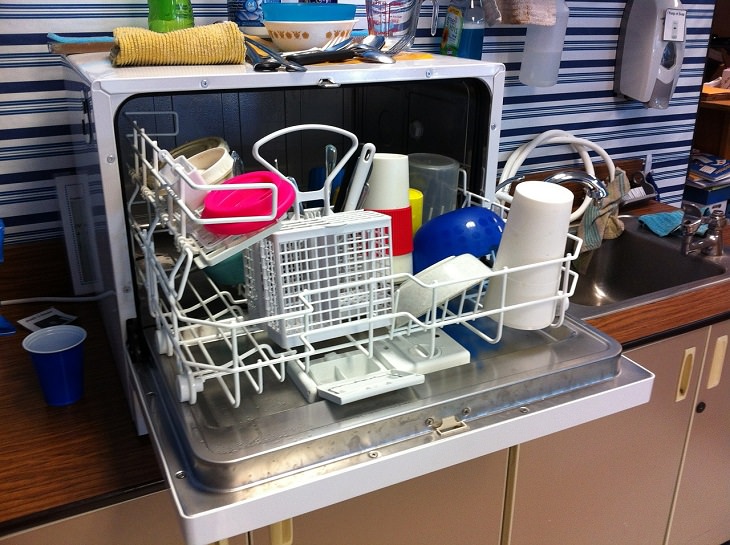
Most washing machines release a predetermined amount of water in any given cycle. So it may feel like you’re cutting your work in half by fitting every nook and cranny of the dishwasher with some small utensil or the other.
But in reality, you’re doubling your work, as there won’t be a wide enough distribution of water to get the dirt off all the dishes. You’ll end up having to re-do it. Fewer dishes in the machine means a more thorough cleanse of your dishes.
5. Vinegar and Its Many Cleaning Uses
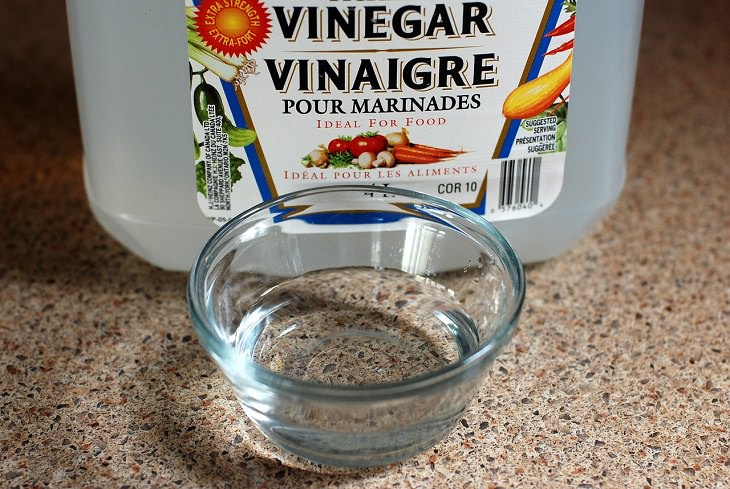
According to the CEO, Mat Franken, of Aunt Fannie’s, a natural cleaning supplies company, boiling a little bit of vinegar can remove stains built up at the bottom of any pan. You can add a little bit when you load your dishes into the dishwasher to help remove any extra stains or grease.
Vinegar can be used to rid wine glasses of that cloudiness that tends to build up over time, according to Jennifer Gregory. It can also help in ridding pans of greasiness.
6. Position Your Utensils Alternately
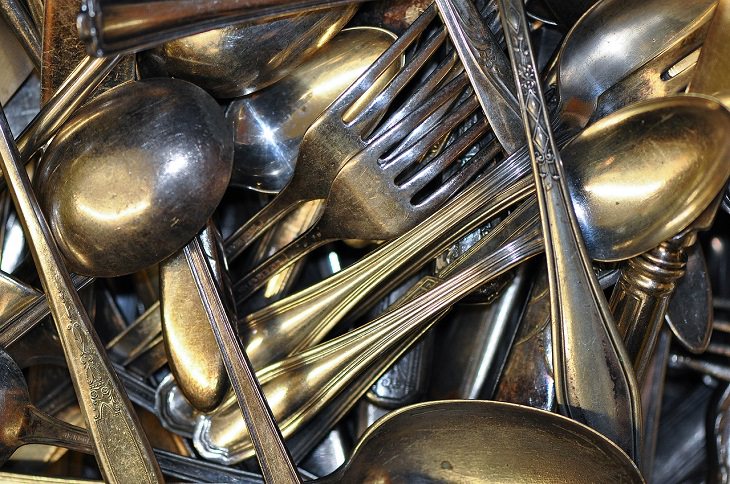
When you’re loading utensils into your dishwashing machine, make sure to flip-flop your spoons and forks before putting them in. Place some of the utensils with the utility facing up and alternate ones with the handle facing up.
This will ensure that none of the spoons and forks become nestled together, which can leave them still dirty after a wash. For obvious safety reasons, all knives should be placed with the handle up only.
7. Use Cold Water to Clean Starch and Dairy Remnants
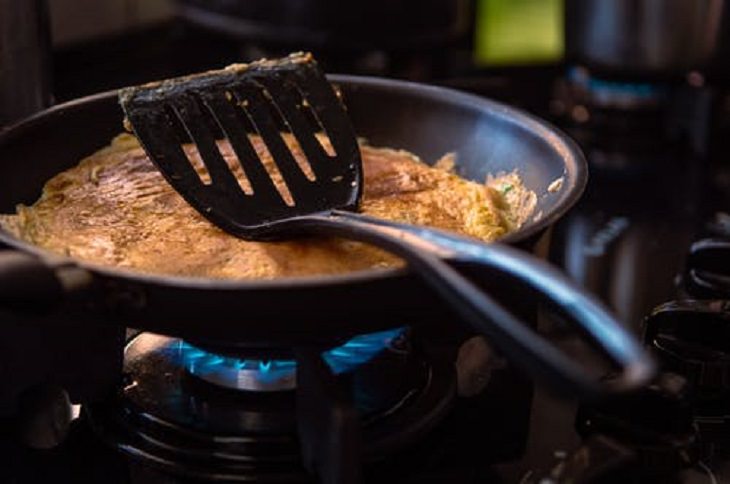
Cold water is usually not the preferred choice for getting out stains. Hot Water is ordinarily more effective at cutting away grease, and it has the added bonus of drying faster. But in the case of dairy and starch products, like lasagna, pasta and many kinds of desserts, hot water can make the pan stickier. Using cold water will make the job much easier.
8. Don’t Rinse Your Plates
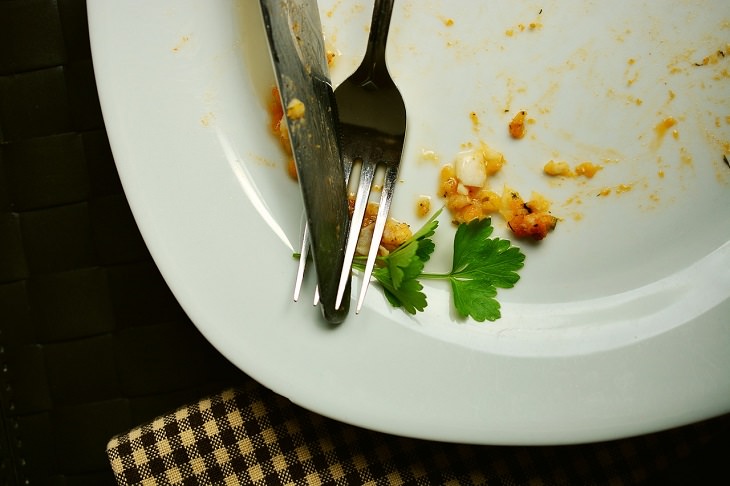
This piece of advice mainly applies to those who make use of a dish-washer specifically. Before loading your dishes into the machine, scrape the food off your plate but don’t rinse it.
Not only does it make your job easier, the food particles can also help make your dishes cleaner during the wash cycle. This is because they act as aggregates to the cleansing process. And it’s one less thing to worry about when you’re loading in dishes.
9. The Cleansing Power of Lemon
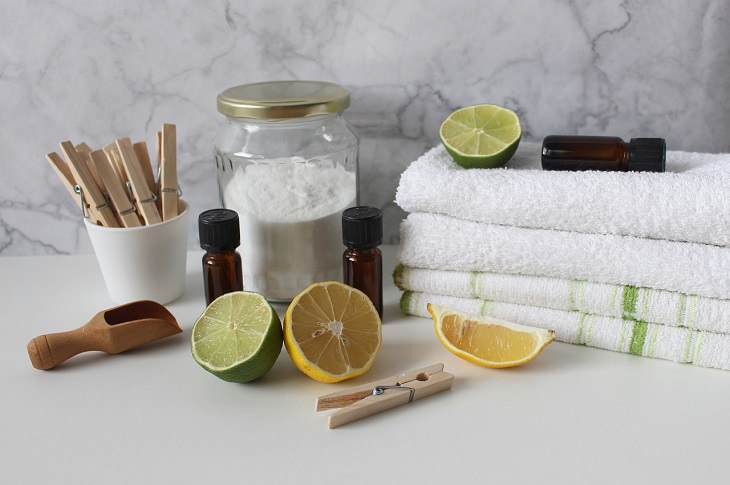
Another great piece of advice from Mat Franken is to use lemons while cleaning. They are particularly effective against those tough-to-remove stains and heavy grease build-up. In that way, lemon juice has similar cleansing properties to vinegar.
You can even place a lemon wedge in your dishwasher before starting a wash cycle. It will give your dishes an extra sparkle and will also leave them with a fresh and lemony scent. Why buy lemon based detergent when you can just use the real thing?
10. Aluminum Foil Can Clean Your Silverware

Jennifer Gregory further suggests using aluminum foil to make cleaning your old silverware easier. It’s a simple recipe of sorts that starts with lining a cake pan with aluminum foil. Fill the pan with a few cups of water. For every two cups of water, add a tablespoon of baking powder. Put the pan in the oven and heat the water to 150 degrees.
Once the water is hot, just place any dingy silverware you have into the water and ensure it is all touching the aluminum foil. Let them sit for 30 to 60 seconds (depending on how much shine it needs) and then remove the silverware using tongs. Clean with a rag to see the new shine!
11. Clean Your Sponge
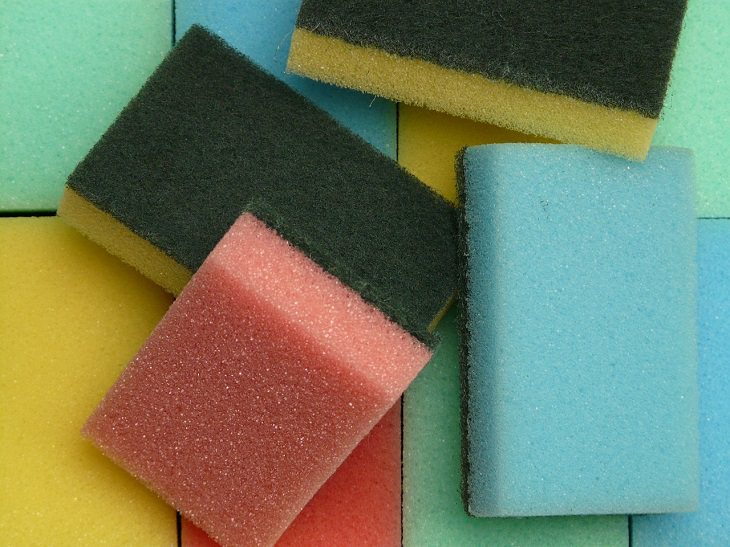
A study conducted in 2017 revealed that the common household sponge tends to gather an enormous amount of bacteria. While frequently washing the sponge under the sink does help, there is still a fair amount of dirt that remains accumulated.
Throw your sponge in with your next wash cycle. The study also suggests heating the sponge in a microwave for a short period of time, boiling the sponge or rinsing with hot, soapy water can reduce its bacteria content.
12. Check your dishwasher for residue.
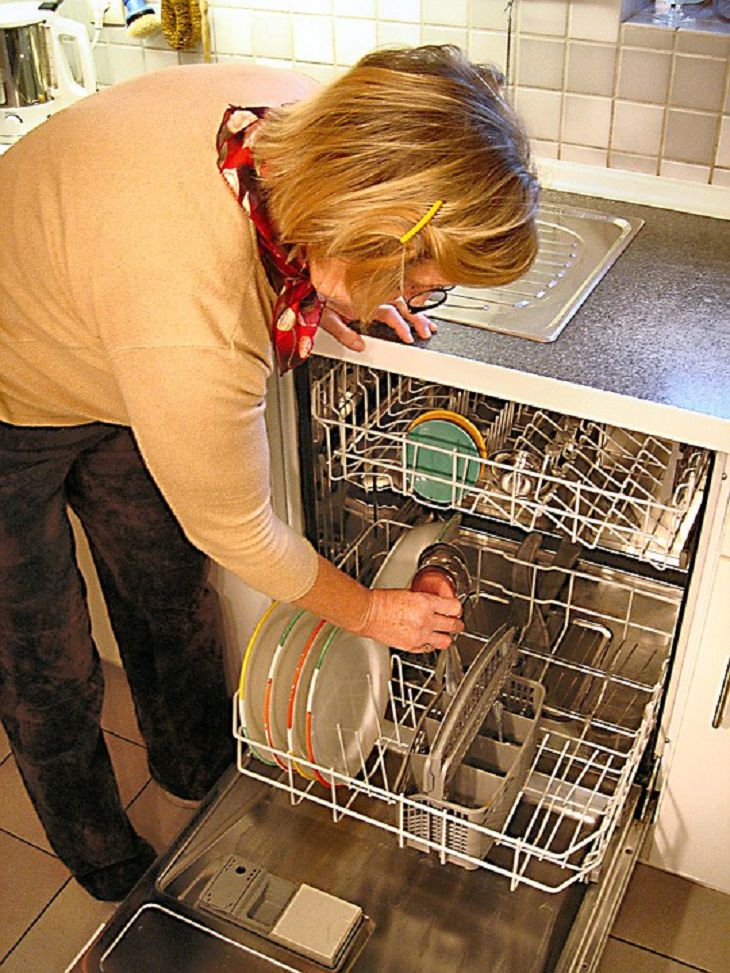
Sean Parry, founder of Neat, a high end cleaning company based out of the U.K., says that limescale build up in your dishwasher can be a major problem. That’s why it's important to frequently descale your machine, or the build-up could affect the flow of hot and soapy water in your dishwasher. However, Parry also says the problem can be tackled by topping up your machine with some dishwasher salt.
13. Clean Wooden boards with salt
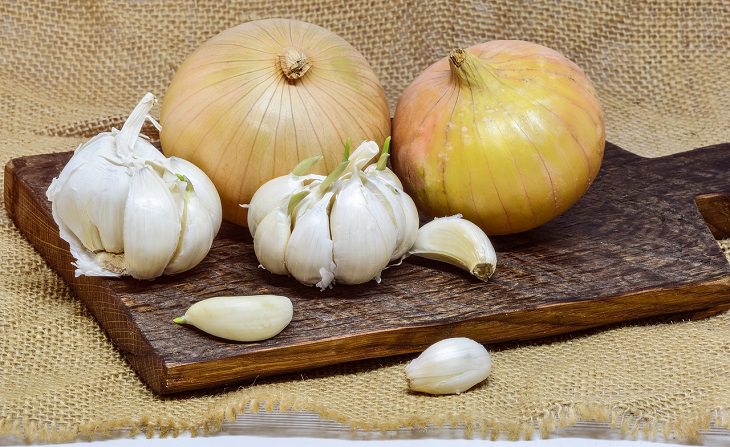
Wooden cutting boards can be tough to clean fully. Every day, we use it to chop and cut a variety of foods. So after a while, a normal rinse might not be enough to keep it bacteria-free. After giving your board a good rinse under warm water, take a few tablespoons of kosher salt. Using half a lemon, spread the salt in concentric circles across the board and rub it in well. Another rinse in warm water will have your cutting board looking spotless and as good as new.
14. Keep An Extra Rack For Dishes
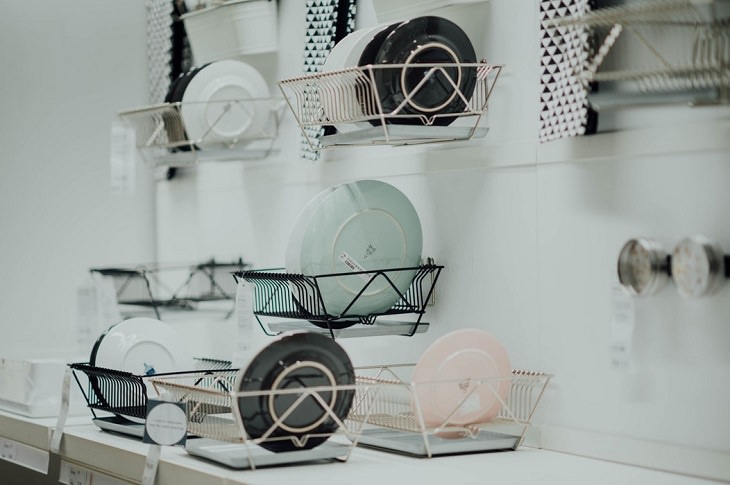
An easy-to-access rack near your dishwasher can make unloading the dishes a much easier task. It can also make drying dishes simpler (if you don’t have a dryer). On the flip side, plastic or glass baskets can be ideal for stockpiling dirty dishes. Having a basket for dirty dishes can help you keep your sink clean on busy days. And you can add water and detergent to the basket for your dishes to soak in till you can get to them.
15. Don’t Let The Dishes Pile Up!
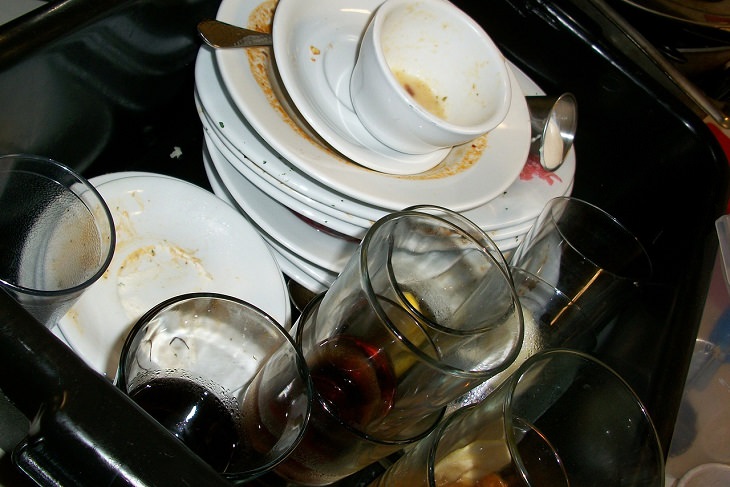
This is just a general tip, especially for the procrastinators like me out there. One or two dishes can pile up to twenty faster than we realize. Taking a few minutes a day to wash the dishes will help keep your kitchen clean and hygienic. And it’ll save you some time later!